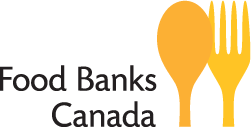Food bank use on the rise in Windsor/Essex
They say breakfast is the most important meal of the day, but a growing number of people in Canada are starting their days without it.
It’s not because they’re too rushed.
There is simply nothing in the cupboards, and they might have very little to eat for the rest of the day.
A new report released by Food Banks Canada suggests more than 882,000 Canadians used a food bank in March 2012, up 2.4 per cent from last year.
The report, known as the Hunger Count, is an annual study aimed at highlighting the issue of food security in Canada. Food security is commonly defined as physical and economic access to sufficient, safe and nutritious food.
As the food bank coordinator at the Salvation Army in downtown Windsor, Major Karen Feltham knows all too well what it’s like to look into the face of hunger. She says she’s worried about how often people in Windsor and Essex County are dipping into the charitable food sector to make ends meet.
“Unfortunately, the poor are getting poorer,” said Feltham, adding that food banks were created in the early 1980s as a stop gap, and were never intended for regular use.
“Even when I started working in this sector 15 years ago, we were hopeful that we’d start to see things level off, but then the recession hit and obviously that wasn’t the case.”
Feltham says the report paints a shifting picture of hunger across Canada, one in which the number of people who are hungry remains the same, but where they live is constantly changing.
According to the Hunger Count, approximately half of the 4,500 food programs surveyed reported an increase in food bank use, while half reported a decrease or no change, the study revealed.
“These findings suggest the economic health of communities can change drastically in a short period of time,” the report said.
Lynda Davidson is the food bank coordinator at the Windsor/Essex County Food Bank Association, which she says, is affiliated with 18 out of the 40 food banks and meal programs in the area.
According to Davidson, in 2012, she has seen a twenty per cent increase in clients, with a spike expected in the winter months due to higher bills for utilities such as heat and hydro.
Currently, the Windsor/Essex County Food Bank association serves approximately 700 people a month, with almost two of every five users being children.
Davidson attributes the growing number of clients she sees, to a decline in well-paying jobs, which she claims, are being replaced with short-term, temporary positions. And she says wages, just aren’t keeping up with the cost of living.
“A lot of employers are not hiring full time, a lot of people we’re seeing now fall into the category that we call the working poor. These are people that are supporting their families on minimum wage. They’re trying to make ends meet but it’s getting harder and harder to stretch a dollar and they end up having to choose between paying their bills and buying food. ”
What’s needed to drive the numbers down is a smarter approach to getting people back on their feet, Davidson added.
Food Banks Canada’s report makes five recommendations, including investing in more affordable housing to ensure people don’t have to make the choice between rent and food.
It also calls for more investment in education and training for those unable to access employment benefits, while beefing up income supplements for seniors to keep them above the poverty line.
Davidson feels that the current government has taken some initiative in managing through this “very difficult period,” but says the Hunger Count shows there is still more to do.



